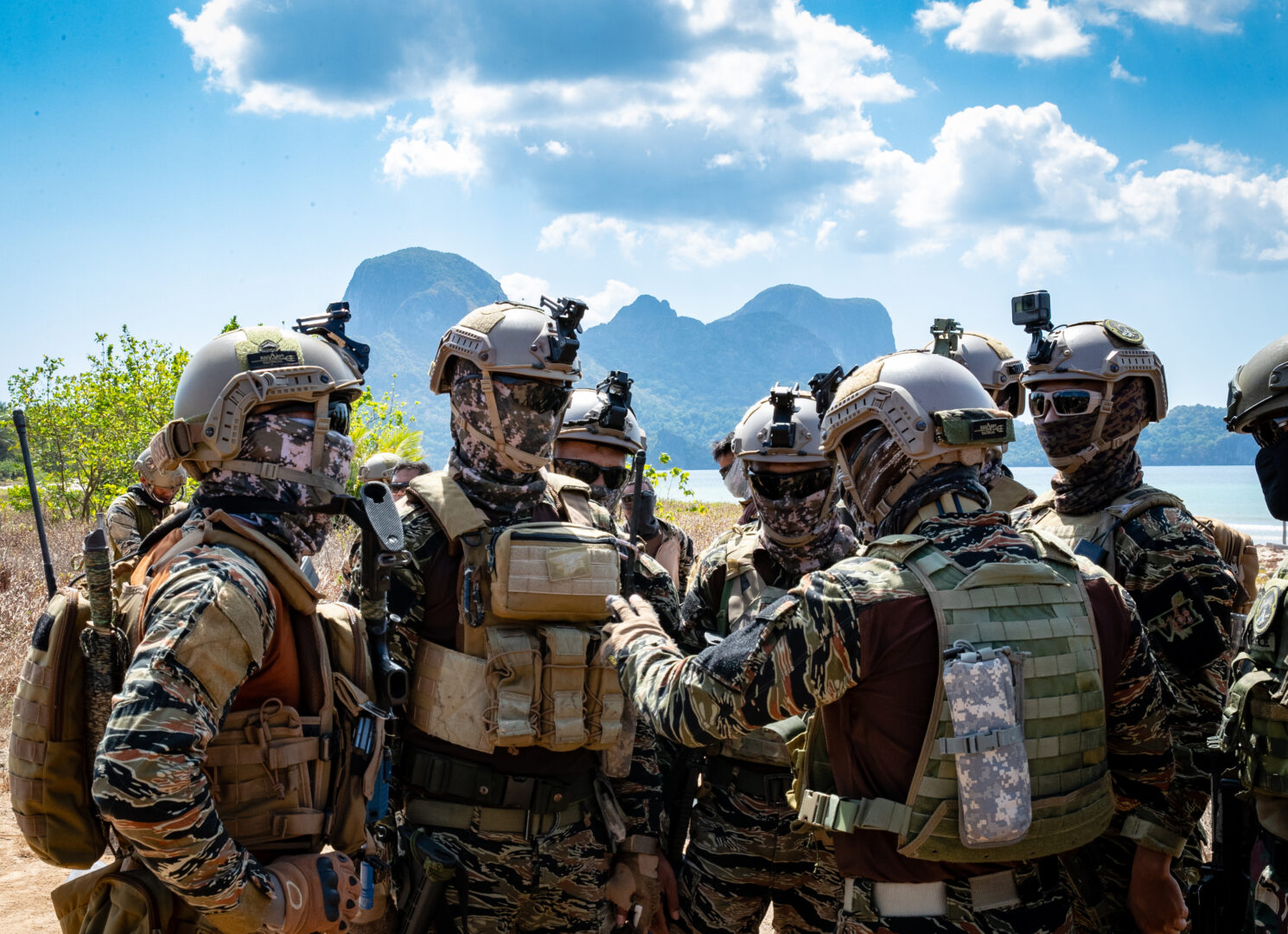Great Power Rivalry and Security Cooperation
According to the 2018 National Defense Strategy, the U.S. views the “reemergence of long-term, strategic competition” by revisionist powers Russia and China as “the central challenge to U.S. prosperity and security.” Consequently, the United States has leaned heavily on security cooperation with frontline states, selling arms and providing security aid, including weapons, training, and other defense resources, to countries in Russia and China’s sphere of influence. Reminiscent of Cold War containment strategy, the policy also fits within the objectives of several administrations’ National Security Strategies that seek to work with allies and partners to counter and contain great power rivals.

At its core, the approach seeks to both strengthen the defense capabilities of allies to defend against threats to their sovereignty and national interest as well as send a signal to Russia and China of American commitment to a sustained presence in these regions. Ultimately, the U.S. government’s intent is to develop trust between partner states and draw them from the potential orbit of regional rivals. However, though several administration’s have placed important emphasis on this approach to managing the listing balance of power in both Asia and Europe, the strategy has proven more successful in responding to Russia’s regional influence in Eastern and Central Europe than countering China in Southeast Asia.
In both cases, the provision of defense equipment remains substantial and growing. Department of Defense official announced in April plans to sell F-35 fighter jets to Poland, Romania, and Greece and similar plans for Southeast Asia. The U.S. has also resumed military training to Indonesian special forces and proposed selling arms to Vietnam. In total, since 2008, the U.S. has provided $5.9 billion to Eastern and Central Europe and $2.2 billion to Southeast Asia in security assistance.
In implementing this strategy, the U.S. has expressed that it prefers its allies use U.S.-made weapons to replace their Soviet era equipment and refrain from purchasing arms from its rivals. This is a vital component of military cooperation efforts with countires like Poland and Latvia, as well as the participants of the DoS’s European Recapitalization Incentive Program, replacing Soviet-era hardware with U.S. equipment. Yet it would not be realistic for the U.S. to expect similar actions from Southeast Asian states given their desire to form a defense relationship with the U.S. as well as China. In the end, strategic realitioes for countries in each region is defining the efficacy of American “contaiment” efforts.
To start with, Georgia and Ukraine are facing direct threats to their territories from Russia while most of the other Eastern and Central European states have had similar experiences as members of the Soviet Union or as satellite states. They have only become more concerned about Russian resurgence in the region following Moscow’s invasion of Georgia in 2008 and Crimea in 2014. They are also more willing to work with the U.S. and its Western Europe allies because of their desire to integrate into Western institutions like NATO, the EU, and the ECB. Southeast Asian countries. with the exception of Vietnam, do not have the same adversarial history with China that Europe has had with Russia. Even though Malaysia, Brunai, the Philippines and Vietnam are currently in a territorial dispute with China over the control of the resource rich and strategic South China Sea, there are other factors that bring these countries closer to Bejing.
Southeast Asian states have strong economic ties with China, which remains one of their largest trading partners and has invested billions in their countries, especially under the Belt and Road Initiative. Thus, deeper defense cooperation with the U.S. could have negative economic consequences for these countries, making them more likely to attempt to steer a neutral course. Eastern and Central European states also have a significant economic relationship with Russia, especially in the energy sector. Yet this has not restricted them from responding to the threat they perceive from Russia after it annexed Crimea by seeking U.S. military support as well as increasing their arms purchase from the U.S.
Moreover, most of these states, including major U.S. partners like Indonesia, Thailand, Philippines, and Vietnam, resist forming deep security relations with hegemonic powers and oppose America’s Indo-Pacific strategy that pushes them to choose between China and the U.S. Coupled with the lack of a military alliance with the U.S. like NATO, these realities limit the strategic value of U.S. military cooperation with the countries in the region.
Lastly, actions by governments and military units in Southeast Asia pose a challenge to U.S. efforts to form partnerships in the region. Though Eastern Europe is by no means blemish free when it comes to human rights issues, Southeast Asian governments and military units have a troubling history of committing human rights violations. Major U.S. partners Vietnam and Indonesia were under U.S. arms embargo that have recently been lifted for violating human rights while Myanmar is currently under an embargo for violent actions against the Rohingya.
Such actions by these governments has not always affected their security relationship with the U.S. but it could restrict the extent of U.S. cooperation. Arms sales to the Philippines has been limited to small arms and avoids complex weapons due to concerns that they will be used against civilians in Duterte’s anti-drug campaign. This has reduced the effectiveness of the strategy in convincing Southeast Asian states to choose the U.S. over China without arming governments or units that will turn their weapons on their citizens. It has also brought some of these states closer to China which does not have similar laws that govern its security relationships.
